Continuous Learning at Sasaki: Green Infrastructure Crawls
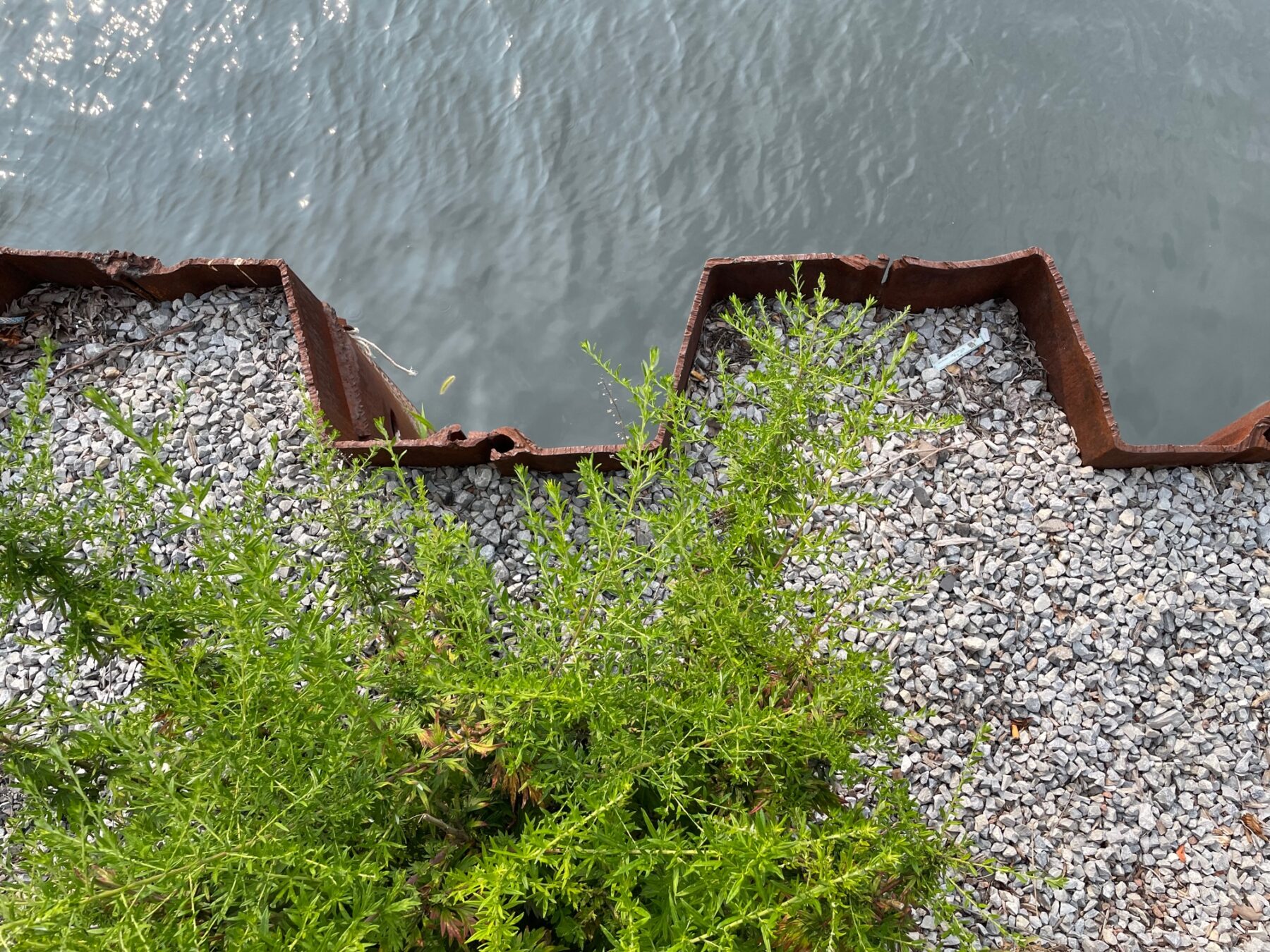
 Sasaki
Sasaki

Throughout the year, staff from across Sasaki’s multidisciplinary design practice come together to learn about topics that will advance their knowledge and skills. On a single day this autumn, 50 employees across three cities stepped outside together to learn from our locales.
Continuous learning is a key driver of firm culture at Sasaki. We boost our knowledge through bootcamps, and workshops, and we channel it back into our projects to deliver innovative planning and design solutions.
Nearly 50 employees from our Denver, New York City and Boston studios joined a firmwide excursion, exploring their environs and learning from internal experts on green infrastructure design and stormwater management topics–from planning and policy to technical design and detailing. Dubbed “Green Infrastructure Crawls,” the walking tours visited a range of examples in the places Sasaki calls home.
Below are reports from the field:
Extreme weather events–like tornados producing apple-sized hail–featured heavily in the Coloradan consciousness last summer. These recent bouts of intense atmospheric activity not only left Denver concertgoers injured but started impromptu rivers flowing, putting the city’s green infrastructure to the test.
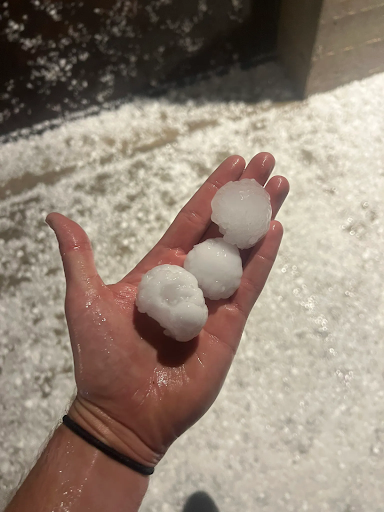
Products of Denver’s severe storms in summer 2023 (Photo courtesy of jsimon3 on twitter)
Increasing hydrological variability within our urban watersheds is creating new challenges. How our cities respond to these complex and evolving patterns is one of the biggest questions in contemporary ecological design.
Denver’s unique location in one of the world’s few Steppe ecoregions, at the convergence of the Rocky Mountains and the Great Plains, means weather is often unpredictable and extreme. Our stormwater strategies must contend with this unique and challenging context.
Our tour, led by Sasaki landscape architect and stormwater expert Brian Wethington, covered residential- to regional-scale strategies, each responding sensitively to surrounding conditions: from streetside planters that percolate rainwater to create beautiful pollinator gardens, to a stormwater basin and channel that provides water quality for 8 square miles and protects some 5,000 homes from flooding in a historically underserved Denver neighborhood, to a detention basin that treats more than 1700 aces of upstream tributary, to the largest streetside stormwater planter in the Denver Metro area.
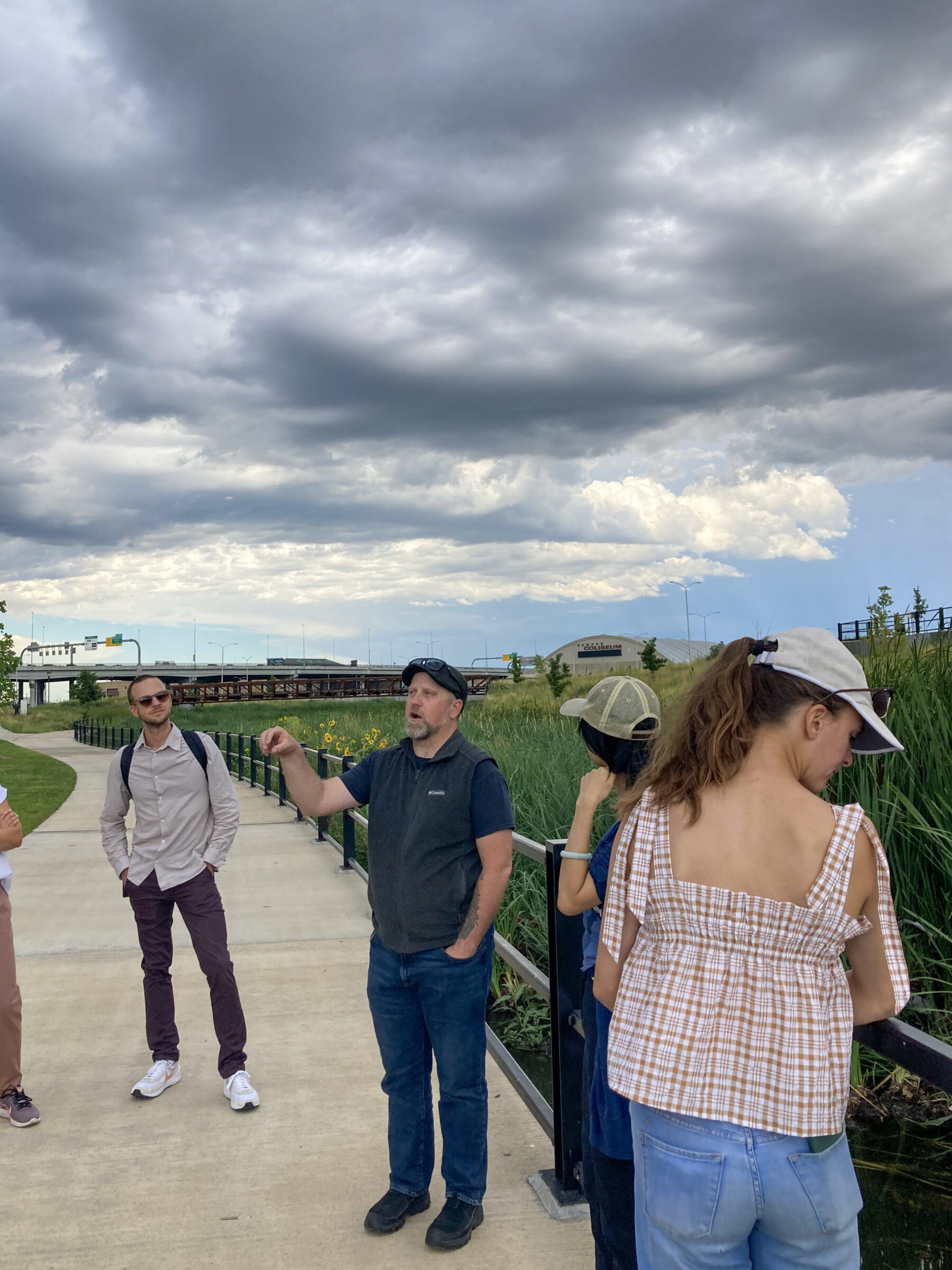
Brian Wethington discussing the unique outfall at Globeville Landing Park, where more than 8 square miles of tributary area spills into the South Platte River
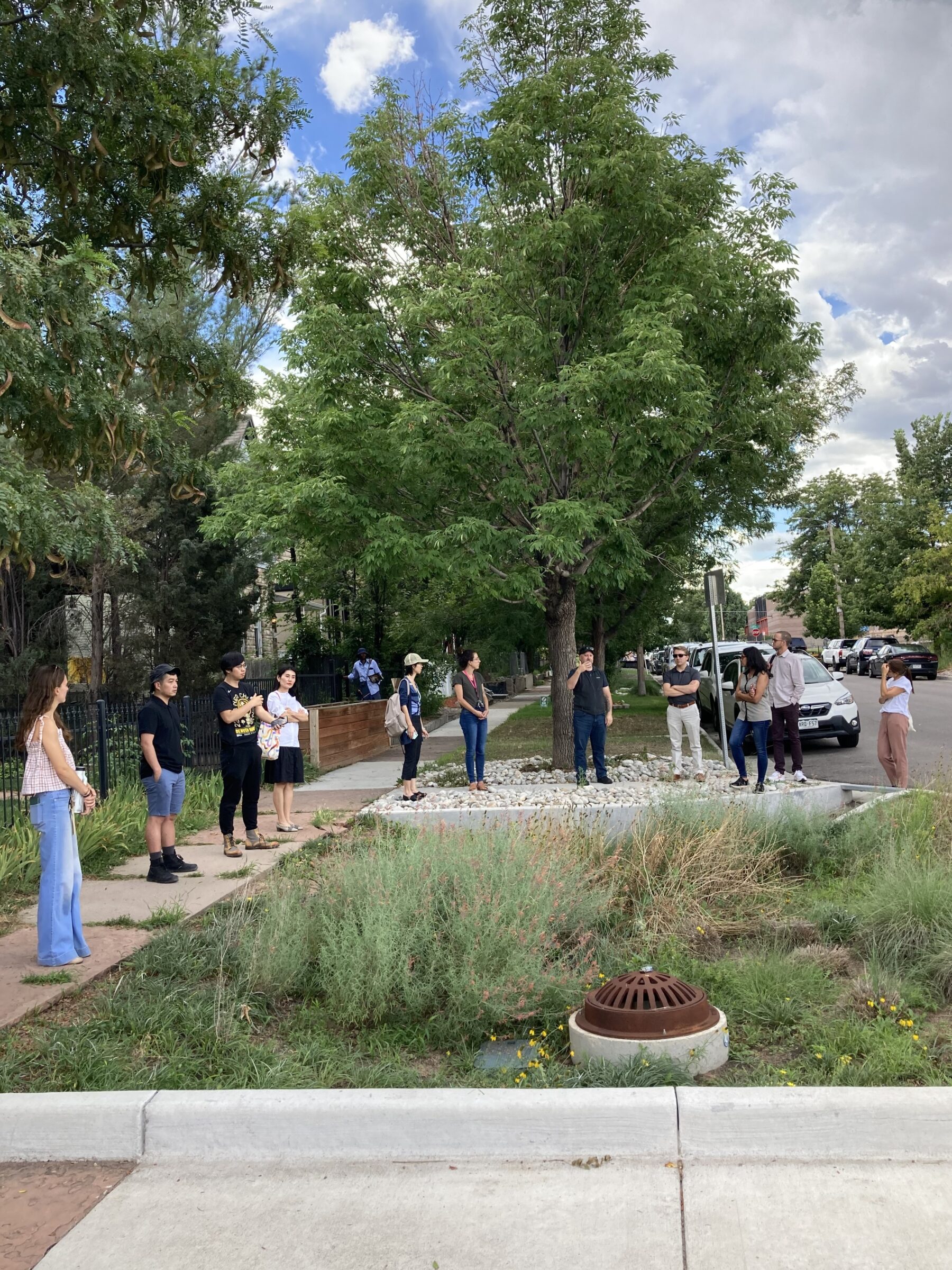
A residential-scale streetside stormwater planter curb extension at 30th and Marion Streets in Denver, Colorado
At each site we got an insider’s perspective on the many successes and lessons learned: “What amazes me,” one Sasakian exclaimed, “is how thoughtfully these strategies fit with the urban environment. These projects highlight how our urban landscapes need to be working triple-time, to be beautiful, functional–and resilient.” Luckily, Sasaki is a place that embraces complexity and approaches design from all angles.
The tour bolstered our awareness that green infrastructure is not just about managing stormwater; it is also an opportunity to reveal and champion the critical natural systems that often move through our cities unnoticed–until they don’t.
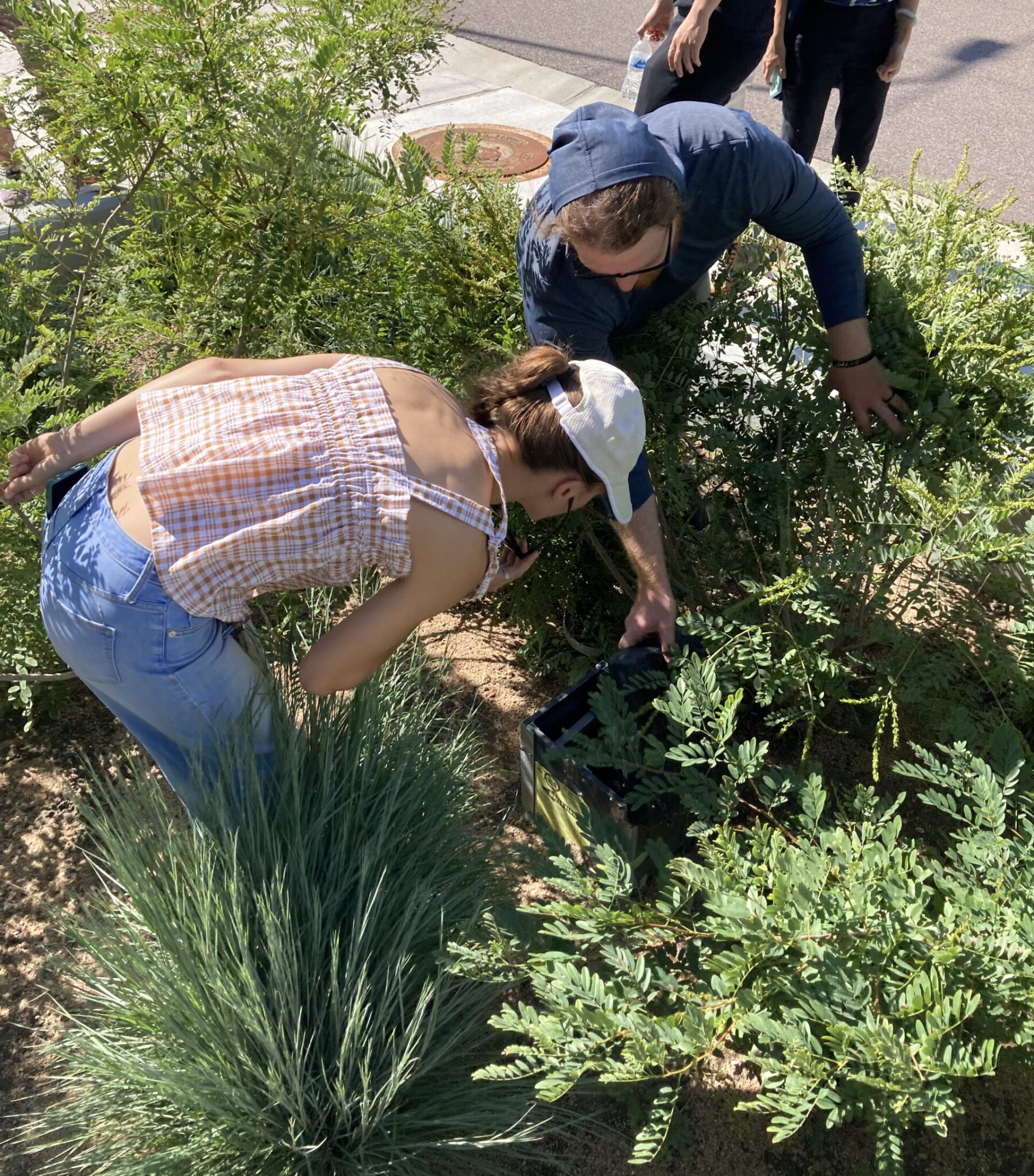
Each stormwater planter on the 39th Avenue Greenway includes a control structure, designed to release stormwater at a specific rate to maximize water quality. Sydney Bittinger and Booker Tieszen assess the depth of this planter.
“What amazes me,” one Sasakian exclaimed, “is how thoughtfully these strategies fit with the urban environment. These projects highlight how our urban landscapes need to be working triple-time, to be beautiful, functional–and resilient.”
As one of America’s oldest cities, Boston has an aging and complex stormwater system buried underneath its brick-clad buildings. As designers we are responsible for helping to alleviate the burden placed on this system by developing and incorporating more sustainable ways to recharge stormwater. In addition to reducing the amount of runoff entering Boston’s drainage systems and ultimately the harbor, the city desperately needs to prevent flooding along its shorelines. These two topics were the focus of the Boston-based tour.
We started at one of Sasaki’s most recent downtown Boston projects, Boston City Hall Plaza. From permeable pavers and tree planters to a rainwater harvesting cistern that irrigates the plant beds on site, City Hall is a model project for incorporating green infrastructure seamlessly into a programmable public space.
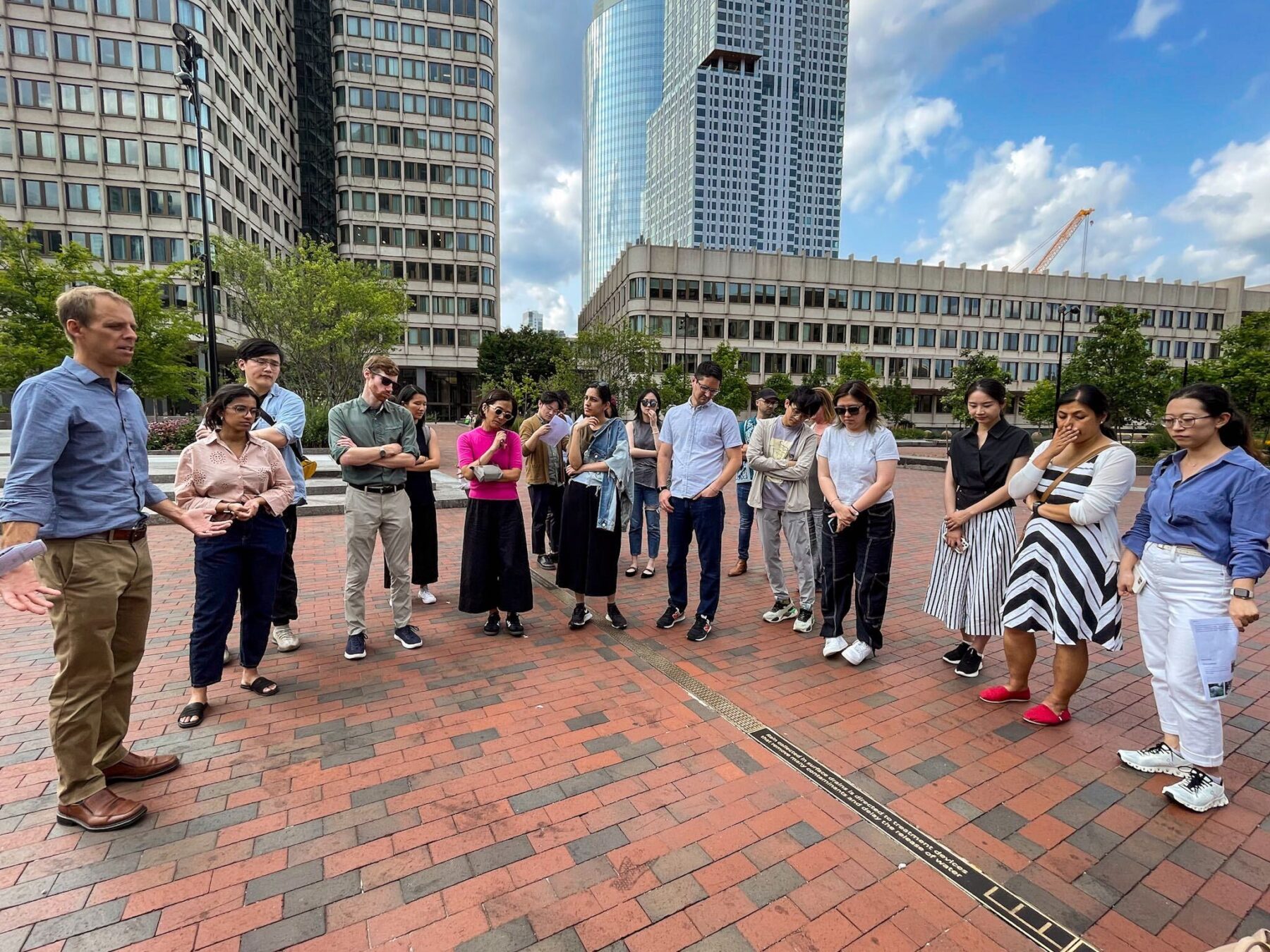
Steve Engler explains how the main plaza drains through porous pavers into the rainwater harvesting cistern for reuse throughout the site

Mary Sullivan discusses the reuse of existing granite at City Hall Plaza. During construction the team was able to reuse the old granite stones from the MBTA subway tunnel located below the site.
From downtown we ventured to one of Boston’s most recently developed areas–Seaport. The tour group walked along Fan Pier Park and to Pier 4 to see the different flood prevention tactics, including floodable steps that incorporate function and play into the harbor walk and rain gardens and bioswales that tie stormwater infiltration and nature. We also discussed the way some of the new buildings in Seaport were designed to be altered in the future when sea levels rise.

Sasakians enjoying the seawall built to protect Seaport against rising sea levels
Our last stop on the tour included Martin’s Park and the Boston Children’s Museum. Sasaki has been working with the Children’s Museum to understand the future flood risks to the site. With landscape architects, civil engineers and architects all coming together to develop a new unique space that will address the future flood risks to the site, it is an example that reinforces the firm’s motto, ‘better design, together’. Exploring Boston to see our local projects spurred new ideas and a sense of urgency to incorporate more green infrastructure into our designs.
Like all New York boroughs, and many of the country’s older cities, Brooklyn is largely serviced by combined storm-sewer systems. That means that a single underground pipe carries both stormwater runoff AND sewage. When it rains, runoff from streets, sidewalks and buildings combine with sewage to create a messy problem.
And, this mess isn’t just a people problem–it also affects our ecosystems, water quality, and more. Roughly 50 times per year, or about once a week, this combined storm sewage system reaches peak capacity. Combined volumes exceeding the treatment plants’ thresholds for intake and treatment send raw sewage directly into NYC’s waterways.
There is no cure-all for this predicament. Tearing up combined infrastructure and replacing it with separate lines for stormwater and sewage is complicated and costly. The solution will take efforts that are gray and green, and designs that are big and small. In Brooklyn, this means green infrastructure in all its forms.
Staff from Sasaki’s New York City studio took to the streets to investigate the situation firsthand and see some examples of green infrastructure in action. Their exploration started with a tour in Brooklyn’s Gowanus neighborhood led by Andrea Parker, Executive Director of the Gowanus Canal Conservancy.
Roughly 50 times per year, or about once a week, this combined storm sewage system reaches peak capacity. Combined volumes exceeding the treatment plants' thresholds for intake and treatment send raw sewage directly into NYC's waterways.
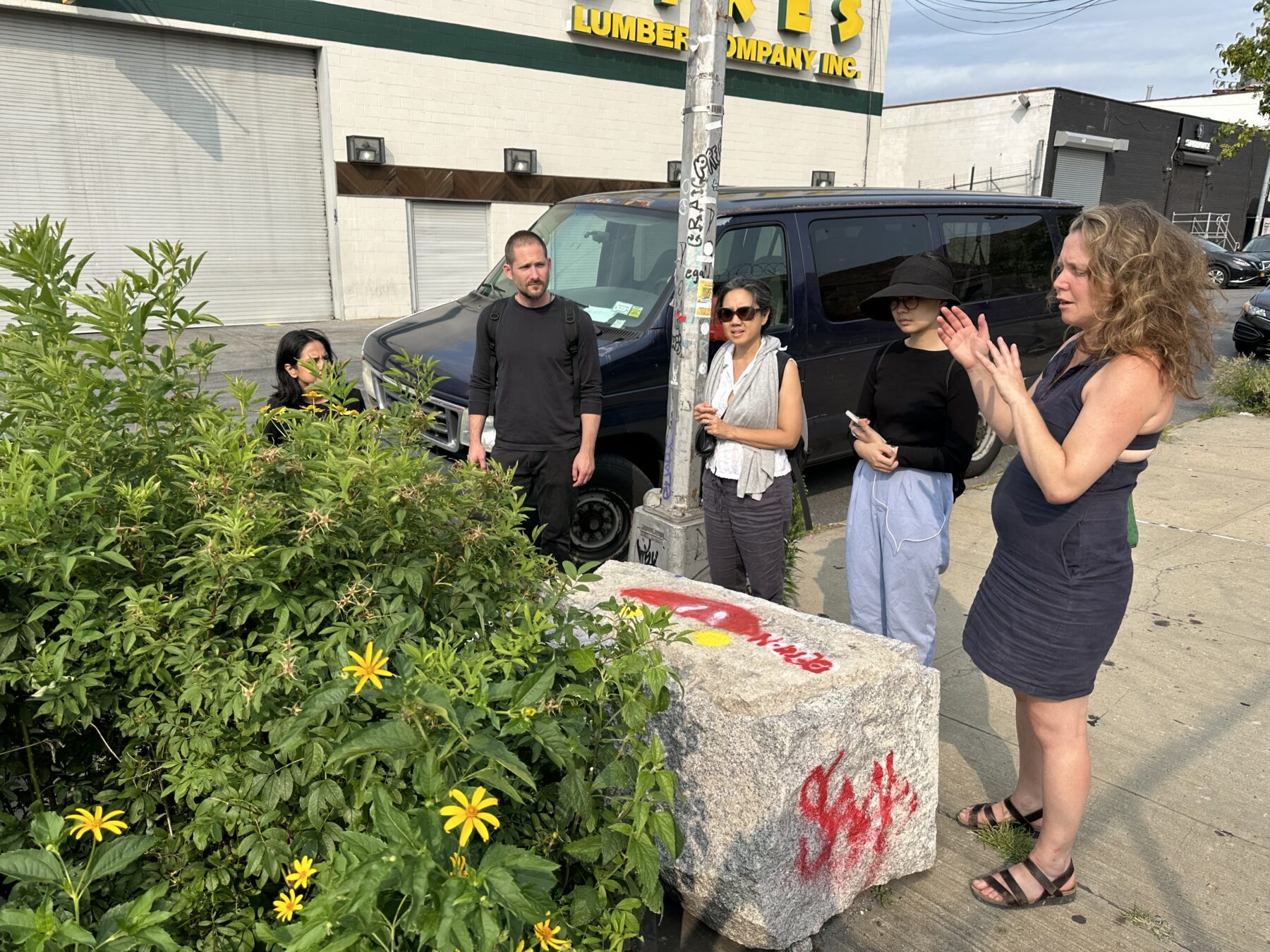
Andrea Parker, Executive Director of the Gowanus Canal Conservancy, leads a tour of Gowanus neighborhood bioswales and discusses lessons learned
“I didn’t know infrastructure could feel so wild!” one Sasakian noted as our group surveyed a bioswale. The bioswale, a curbside, hydrologically-connected series of planted infiltration and detention areas, and other green infrastructure initiatives like it, are products of an intricately choreographed collaboration among New York City entities. These include the NYC Department of Environmental Protection, NYC Department of Transportation, NYC Department of Parks and Recreation, neighborhood groups, nonprofits (such as Gowanus Canal Conservancy), and citizens interested in keeping stormwater runoff out of the City’s storm drains.
Reduced volumes relieve the burden on treatment plants and allow relatively clean runoff to infiltrate into the ground slowly, before it combines with sewage below the street. The densely planted, native palette–the “wild” of the infrastructure–also aids in the process, along with an array of subterranean broken stone chambers.
“Will this solve the problem?” another Sasakian asked. The short answer is, “not in isolation,” or “not yet.” But it will help. It will take a sustained, multifaceted effort to address this issue, and multiple forms of green infrastructure–from permeable pavements (such as the precast pavers and permeable asphalt the Sasakians explored on the tour) to rain gardens, and more. It will also require more traditional, gray infrastructure initiatives that achieve the prime stormwater objectives of slowing it down, spreading it out, and soaking it up.
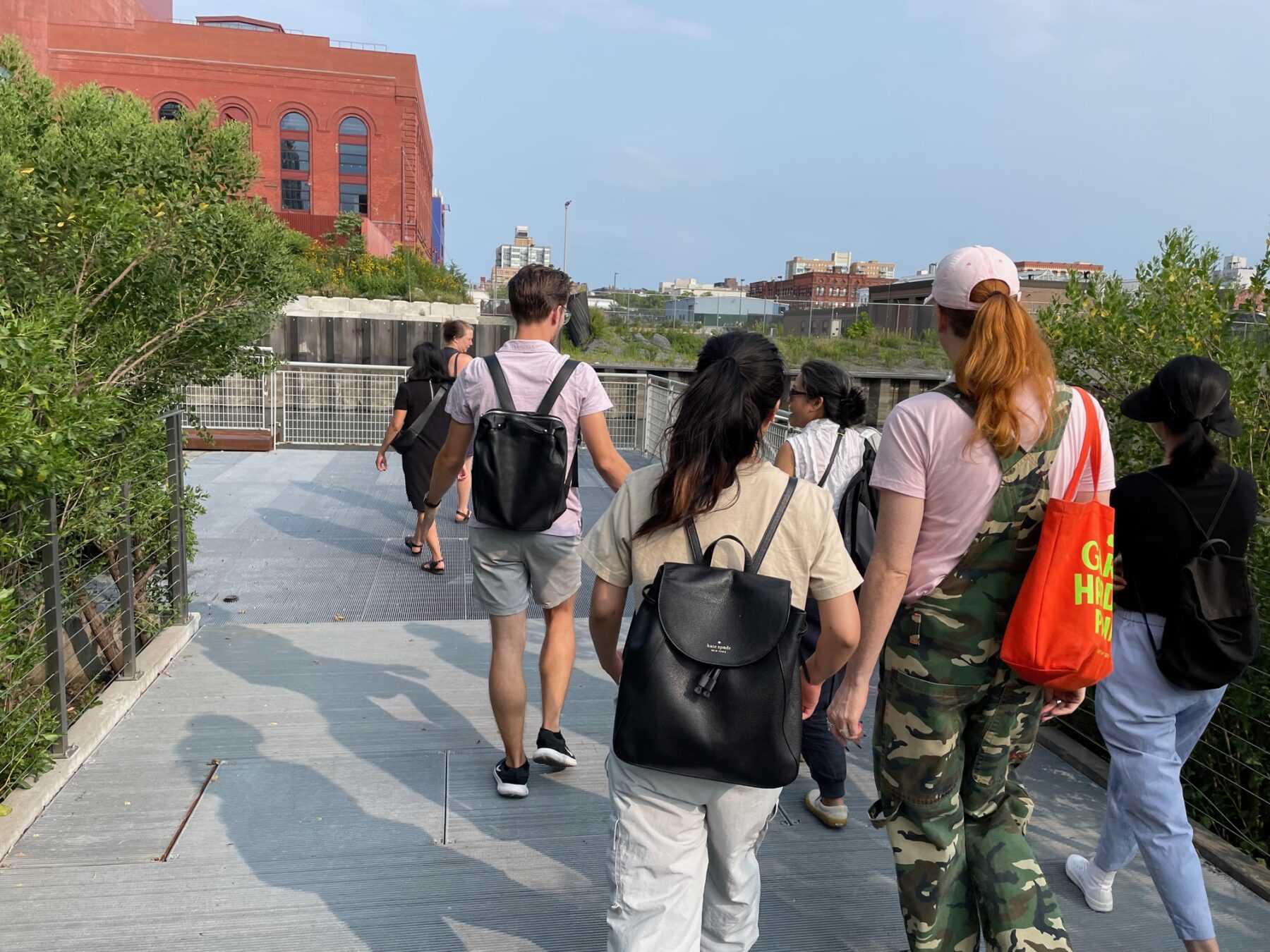
Sasaki’s New York City studio explores Sponge Park at the intersection of 2nd Street and Gowanus Canal
But it is not enough to simply build green infrastructure. It must also be maintained. The “green” of it requires care and maintenance. Inlets can become clogged, sedimentation can wreak havoc on green infrastructure effectiveness, and plants can die. And while maintenance funding is scarce, it is often the difference between a beautiful, functional bioswale and a weedy stretch of sidewalk puddle.
Despite these challenges, Brooklyn is charging forward, building more bioswales, finding dollars and ways to care for them, and looking for opportunities to fold a bit more “wild” into the city.